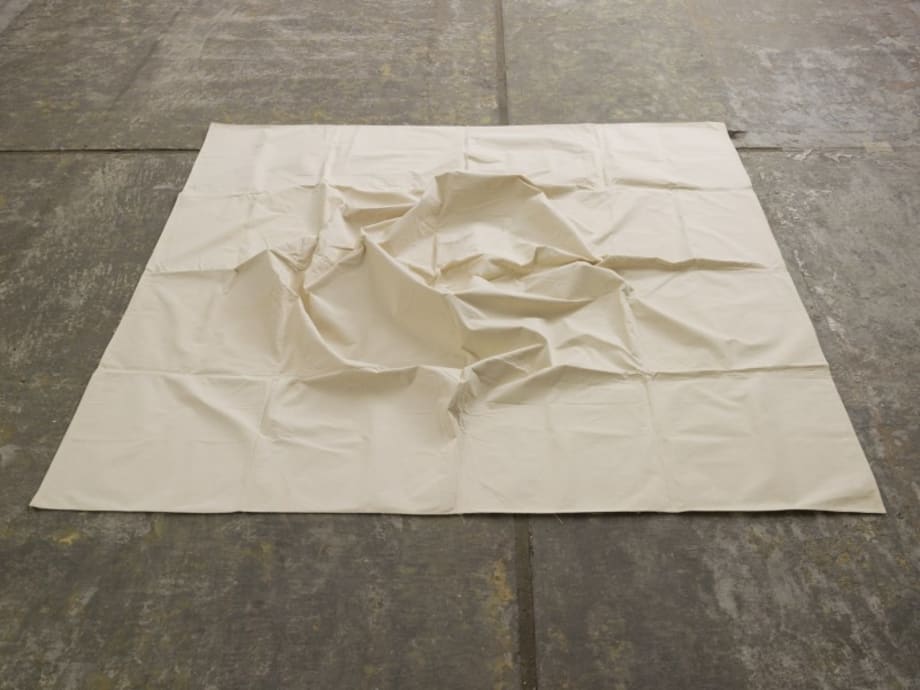
Incommensurability is a concept that most are likely to encounter at some point in their Geometry class – in the world of Mathematics it's what we use to describe the way that irrational numbers behave. The classic example is the conundrum that early Greek geometers encountered when applying the Pythagorean theorem to the unit square – a square with sides of length 1.
If a2 + b2 = c2, then 1 + 1 = c2, and c (the diagonal through a unit square) is the square root of two – this is a magnitude that cannot be derived by adding, subtracting, multiplying, or dividing any integers or fractions. In other words, if we had toothpicks of all sorts of unit or fractional lengths, we could never combine them in just the right way to add up to root two. We can only make sense of the diagonal of the unit square by expanding our mathematics to add exponents and roots.
The Japanese artist Jirō Takamatsu gives a tactile and visually arresting example of incommensurability in his piece, Slack of Cloth No. 287 (1970), in which he has fashioned a large cotton cloth out of smaller squares where the seams of the interior are longer than the square boundary of the exterior. This causes the middle portion of the cloth to bunch up in unpredictable ways whenever it is set on a flat surface – the incommensurable worlds of curving and planar geometries interacting in a beautiful mess. Many of us have encountered something similar if we've ever tried to flatten out a spherical beach ball or create a ball out of paper – we can't really flatten a globe onto a piece of paper without cutting, stretching, or manipulating the materials.
As a final example, the composer Brian Ferneyhough is noted for exploiting the aesthetics of incommensurability in his music, setting up elaborate and conflicting systems of musical materials until his pieces "fall apart" under the weight of these conflicts in fascinating and dynamic ways.
As I continue on my journey in Side B spaces, attempting to reconcile faith and queerness, considering all of this through my favorite lens of constraint and formal systems, I have come to embrace the role that incommensurability plays more and more – I think it's a critical part of what makes our interactions with theology richly rewarding and unexpected. I think that the framework of incommensurability also has given me the ability to see interpersonal conflict as an opportunity for expanding my horizons. Much like how mathematicians needed to create new aspects of algebra to account for irrational numbers, I think as we encounter interpersonal conflict, our horizons expand and we learn new ways to integrate our experiences with those of others.
As with my reflections on constraint, I think that Christ's incarnation is a prime example of reconciling the incommensurate – in Christ's, case the identities of deity and humanity.
"I, therefore, the prisoner for the Lord, urge you to live worthily of the calling with which you have been called, with all humility and gentleness, with patience, putting up with one another in love, making every effort to keep the unity of the Spirit in the bond of peace. There is one body and one Spirit, just as you too were called to the one hope of your calling, one Lord, one faith, one baptism, one God and Father of all, who is over all and through all and in all."
– Ephesians 4:1-6 (NET)
Last modified: 07-06-2024